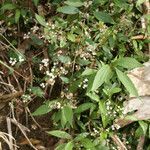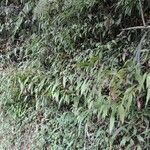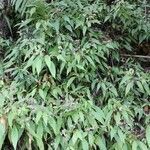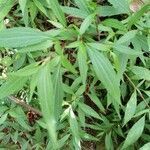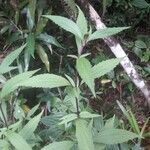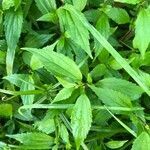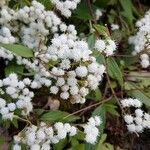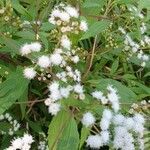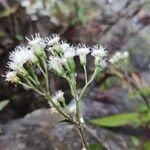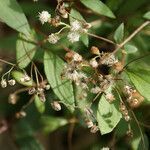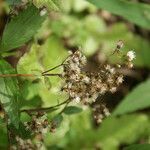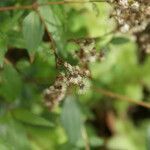Erect or sprawling perennial herb to subshrub, 0.3-1-(2) m tall. Stems moderately to densely clothed in purple-striped eglandular hairs at least above, often tinged purple, much-branched. Lvs opposite; petiole hairy, 12-20 mm long; lamina glabrescent to sparsely hairy especially on veins of lower surface, narrow-elliptic to lanceolate, acuminate, coarsely serrate except near base, (30)-60-100-(130) × (8)-15-25-(40) mm; uppermost lvs smaller, sometimes entire. Capitula 4-5 mm diam., many in terminal corymbs; peduncle clothed in eglandular hairs. Involucral bracts in 2 ± equal rows, usually with shorter, narrower supplementary bracts outside, narrow-elliptic to lanceolate, hairy, 4-5 mm long. Florets white. Achenes black, 5-angled, hairy especially on angles, 1.5-2 mm long.
A thinly hispid bushy perennial herb up to 1 m tall. Leaves up to c. 6 x 2 cm, opposite, lanceolate, triplinerved, apex acuminate, base cuneate, margins serrate, petiole up to c. 1.2 cm long. Heads narrowly campanulate, c. 5 x 3 mm, crowded in corymbs terminating the twigs and short lateral branches. Involucral bracts biseriate, lanceolate, glandular-pubescent. Flowers white. Achenes c. 2 mm long, subcylindric with 5 ciliate angles, blackish. Pappus of numerous scabrid bristles.
